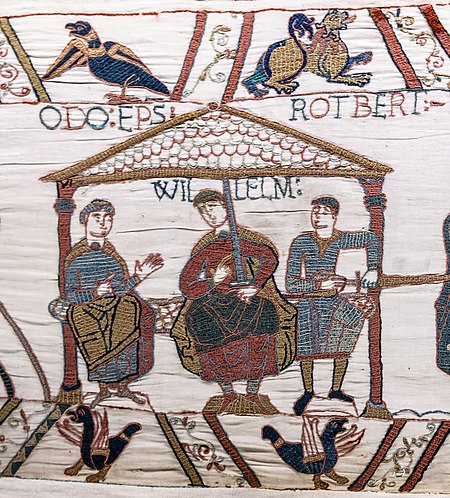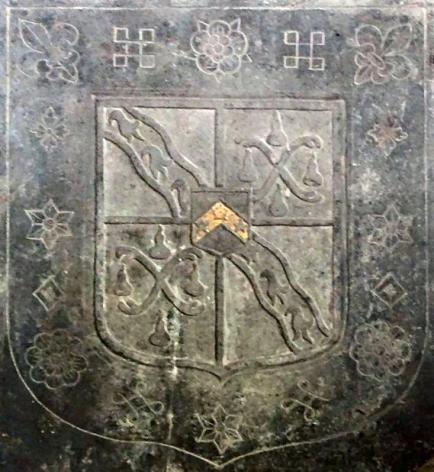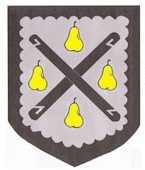
TREBARTHA |
In the Book of Spoure, written in 1694 by Edmund Spoure of Trebartha Hall, he introduces the Trebartha family as follows: |
|
"The Trebarthas were a very ancient Family, memorable as I finde by old deeds, even in the very Saxon times, here in England perhaps might be a Family of Note Long before but time has so blotted out their remembrances that I cannot produce an exact pedigree of all their descents farther back than the Reign of King Edward the First of Norman Race but since that time you'll finde the following Genealogie to be very true." |

|
|
A newspaper article written in 1880 suggests that the property was owned by Walter Reynell in 1193 who has been recorded as the castellan (governor) of Launceston Castle in 1189. If this is correct then it would indicate that the family who came to be known as Trebartha came after that date.
The Trebartha Estate was owned by a family of that name until the end of the fifteenth century. This was, as stated by Edmund Spoure, an ancient family which flourished in Cornwall from the reign of Edward I (early 1100s) to Henry VII (1485-1509). The family tree shown to the left, taken from Vivian's Visitations of Cornwall page 430, demonstrates how the Trebartha family eventually passed the estate to the Spoure family. The Book of Spoure has a coat of arms for the earliest Henry Trebartha shown in Vivian's Visitations that shows the Trebartha arms impaled by what are believed to be the Lye family arms, suggesting that Henry had married a woman named Lye. According to The History of Parliament website a John Trebarthe who was Member of Parliament for Lostwithiel may have been from North Hill. The entry on that site reads: "Bailiff of the stannary of Blackmore 1401-5. Bailiff itinerant of the Duchy of Cornwall 6 Feb 1407-Oct 1441. "Trebarthe did duty as bailiff of the stannary of Blackmore for at least four years before being promoted by the prince to the more prestigious office of bailiff itinerant of the duchy estates in Cornwall, and he was occupying the latter post at the time of his election to Parliament by the borough of Lostwithiel, the administrative centre of the duchy. By 1417 he had secured his office for life, but after Henry V's death the new King's councillors changed back his terms of tenure to 'during royal pleasure'. Even so, it seems likely that he continued to serve as bailiff until he died. In 1426 the Receiver of the Duchy empowered him to present the accounts for the hundred of Kerrier, the bailiffship of which was then divided between the coheirs of Bloyowe; but otherwise he appears in the records only as accountant for the dues collected by virtue of his own office. He probably died shortly before 4 Oct 1441, the date that John Trevelyan succeeded him". (* appenage = a provision made for the maintenance of the younger children of kings and princes, consisting of a gift of land, an official position, or money). The National Archive holds a document (C 241/170/26) dated 1382 that shows a debt of 40 pounds from John Trebartha to Walter Reynell. In 1428 Robert Trebartha witnessed the deed that transferred ownership of tenements on Twelve Men's Moor in the area of Bastreet from Alice Troppe to Richard Martyn. Another document (C 1/172/8) held in The National Archives records a dispute around the end of the 15th century between Robert Trebrtha and John Neuton, a recently appinted Rector of North Hill. It seems that Robert's grandfather, also named Robert Trebartha, had given land to an earlier parson, John Frye, on the understanding quarterly masses were said in remembrance of Robert, the grandfather. It would appear that this undertaking was reneged upon and the land was used by the Trebartha family. The newly appointed rector brought a case to restore the property to him and the church.
The Trebartha arms can be seen in the upper left and lower right quarters of the shield on the incised slate. The Callaway arms are shown in the upper right and lower left corners. The coloured version can be seen here, left, has been used with the kind permission of the Callaway Family Association. To read more about this family, go to http://www.callawayfamily.org. |
The images at the top of the page show three representations of the Trebartha arms (L-R): taken from the Book of Spoure; a modern interpretation; taken from the Spoure Monument in St Torney's Church. The blazon is recorded as azure (blue), on a bend, wavy, argent (silver), three choughs, erased, sable (black). |

 Edward the First came to the throne in 1272 which was over 200 years after the Norman Conquest. In the
Edward the First came to the throne in 1272 which was over 200 years after the Norman Conquest. In the 

 Nicholas Trebartha, the last male heir, married in 1468 to Catherine Kelloway (Callaway), the daughter of John Kelloway. Nicholas died in the reign of Henry VII leaving his daughter Anne as sole heiress. She married in 1498 to Thomas Spoure of Misterton in Somerset; he was captain of a troop of horse and had been sent to Cornwall to suppress a rising against the Crown, and there met and married Anne. (Information from the Spoure Book).
Nicholas Trebartha, the last male heir, married in 1468 to Catherine Kelloway (Callaway), the daughter of John Kelloway. Nicholas died in the reign of Henry VII leaving his daughter Anne as sole heiress. She married in 1498 to Thomas Spoure of Misterton in Somerset; he was captain of a troop of horse and had been sent to Cornwall to suppress a rising against the Crown, and there met and married Anne. (Information from the Spoure Book).  In St Torney's church is an incised slate (right) displaying the arms of Trebartha and the arms of Kelloway along with the arms of the Spoure family. The Spoure arms are in the centre.
In St Torney's church is an incised slate (right) displaying the arms of Trebartha and the arms of Kelloway along with the arms of the Spoure family. The Spoure arms are in the centre.